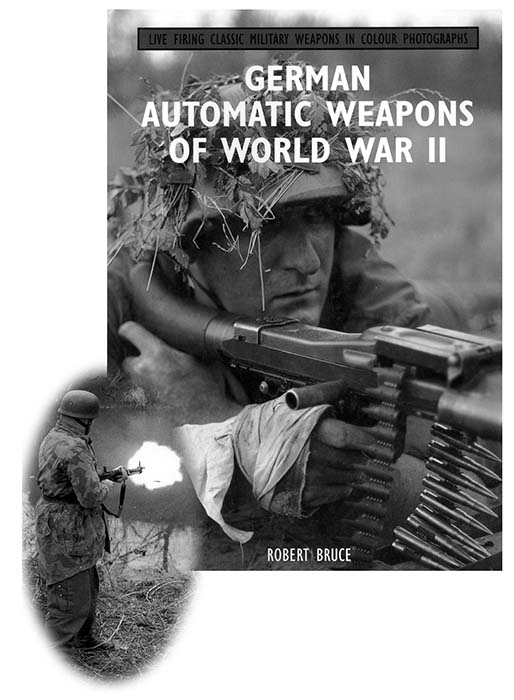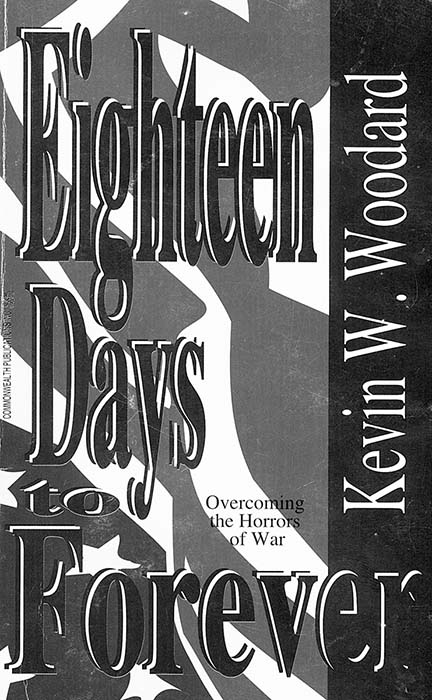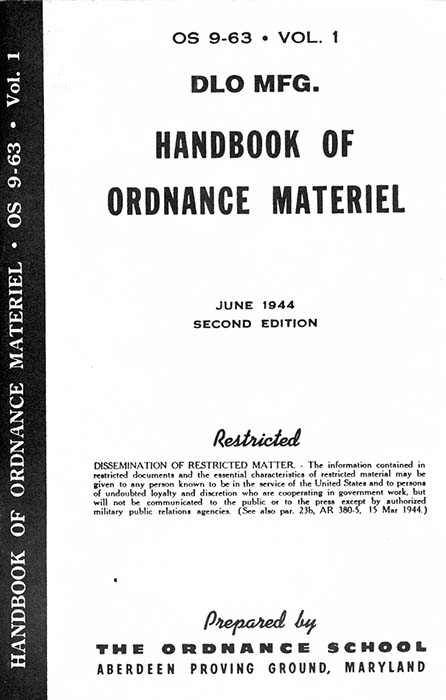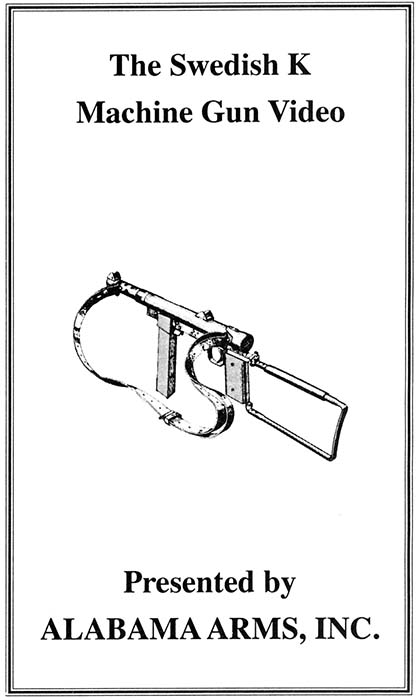By Dan Shea
GERMAN AUTOMATIC WEAPONS OF WORLD WAR II:
Live Firing Classic Military Weapons in Colour Photographs.
By Robert Bruce
(Hardcover, 128 color pages)
Autograph copies are available from the author
Robert Bruce
PO Box 482 SAR
Sandston, VA 23150
Retail $35.00 postage included

Above all else, Robert Bruce is one of the top photographers working in the firearms field. He is also a student of small arms, and a historian. Add these three things together, and you end up with an outstanding piece of work. German Automatic Weapons of World War II is exactly what the class 3 community needed.
A good informational book will have historical perspective as well as in depth analysis of the firearm. Robert Bruce has provided both, with wonderful detail. He covers the select fire Mauser Schnellfeuer-Pistole as well as the MP-40, MG-34, MG-42, FG-42 both type I and type II, and the STG-44 (MP-44). The photography is clear and crisp as should be expected, but it is all color, and done in an interesting fashion. Intermingled with the excellent disassembly sequences are live fire photos by models in authentic period uniforms. There are some historical photos as well.
The text is well written, and follows an easily read format. You can read German Automatic Weapons of World War II as a book, not just use it as a tech manual. The author tells the story of the development of the firearms, intermingled with the technical information and the observations of the modern day shooters who participated in the making of this book.
Want to know how to disassemble the MG-34? Four full color pages with photos that are clear and large enough to see all of the details. Loading and firing the Schnellfeuer machine pistol? Eight full color pages that guide you through the process, and hints on achieving accuracy.
This is a much needed book, and I highly recommend it to all interested in World War II Germany, as well as to the Class 3 community.
The Paraclete
(video)
By Velko Milosevich
Velko Milosevich made “The Paraclete” as his master’s thesis film for the University of Southern California School of Cinema. The film was shot entirely in Michigan and took three years to complete. It’s about an undercover Detroit cop and former SEAL that’s losing his mind and it is super visual. There is a realistic ambush of Navy SEALs firing M-203’s in Bosnia complete with a guy getting hit by tracer bullets (a cinema first and a minute on screen which took 4 days to shoot) and an outstanding gunfight in a car. The tracer bullets were done by Digital Domain, the Hollywood movie effects house that did many of the effects on Titanic. It is exactly 35 minutes long and was shot in the professional 35mm format. The Paraclete is probably the biggest thing ever done at USC. It has very eclectic music and is non-linear so if you’re a big fan of “Tango & Cash” and don’t enjoy violence and cursing – it’s probably not for you!
The above description is a paraphrase of an email that Velko sent to me when I heard about his film on Bowers Board on the Internet (http://www.subguns.com). He is an SAR subscriber, and an enthusiastic student of modern weapons, so I was very interested in what his project would be like. Interestingly, Velko is also the Libertarian candidate for US Senate from California.
So, what was it like? A haunting combination of imagery and sound. Realistic- but surreal at the same time. I was thoroughly impressed. The attention to detail was unnerving. Velko is of Yugoslavian descent, and the story line follows a troubled son of immigrant parents and his mental deterioration after a horrible behind-the-lines Bosnian firefight and POW experience. He is a Detroit cop at the time of his mental breakdown, and his problems stem from a childhood nightmare experience that becomes clearer as the movie progresses, as well as from the ambush in Bosnia.
Although the firearms use was a small part of the on-screen time, it was some of the best contact that I have seen put on the silver screen. No hokey BS. When the firefight starts, it flows into that frozen series of microseconds that make up combat. Back in the city, as the cop goes undercover in an investigation that unravels in the back seat of a car, the sense of the inevitable violence grows until it just rolls off the screen at you, then explodes in a shotgun / pistol fight at close range. Dynamic stuff, not the kind of crap you see on television.
The Paraclete (which means Holy Spirit or intercessor) was one of two Western Regional Finalists for the prestigious Student Academy Awards and has screened at the Texas Film Festival, the Hermosa Beach Film Festival, and won First Place Experimental at the Central Florida Film Festival.
The price is $15 and covers the cost of the VHS tape plus first class shipping but unfortunately doesn’t get Velko’s education fund totally out of debt. If you’d like a copy send a check or money order to:
Velko Milosevich
3460 Centinela #307
Los Angeles CA 90066
velko@earthlink.net
310-398-7171
EIGHTEEN DAYS TO FOREVER (Overcoming the Horrors of War)
By Kevin W. Woodard
(130 pg. Softcover $4.99 US / $6.99 Canada)

Kevin Woodard is a line staffer at the Knob Creek Shoot, and has been seen cheerfully executing those duties for quite some time. Kevin has also seen the Elephant, and lived to tell the tale. His wife asked him to tell his story, and tell it he did.
This is not just another ‘Nam book, it is a story that goes right to the heart of the Sixties and what went on both in the US and In-Country Republic of Vietnam. As a young Staff Sergeant he ships in, immediately hits combat, and stays in various fights until he is seriously wounded on 18 April 1969, some “Eighteen Days” In-Country. That is when Kevin’s story really begins. In his words, he has died and is reborn on the same day- his old way of looking at things is forever changed due to the wounds he received.
I found this to be wonderful book to read. The honesty of the combat scenes, the sacrifices people make because of egotistical inexperienced officers (100% casualties in his unit on 18 April), the humor of military men. What shines through in the end of it all, is the strength of the human spirit. It’s a short book, a paperback, but one that this author recommends to all.
Eighteen Days to Forever is available for $4.99 + $2.50 S&H from:
Commonwealth Publications Inc.
9764 – 45th Avenue
Edmonton, Alberta, Canada, T6E 5C5
HANDBOOK OF ORDNANCE MATERIEL OS 9-63 Vol 1
June 1944 Second Edition, reprint by DLO mfg. (128 pgs. softcover)
Available from: DLO Mfg, 10807 S. E. Foster Ave, Arcadia, FL 33821
$6.00 plus $2.50 postage

Prepared by the Ordnance School, Aberdeen Maryland during World War II, this small handbook is a must have. It is an illustrated guide to all of the weapons the US forces used in WWII. Starting with the pistols and submachine guns, through the rifles and machine guns, various tripods, mortars, cannon, tanks and finally through all of the basic trucks, this handbook gives the vital statistics of each. If you are a class 3 dealer, or an enthusiast, you need this book in your reference library. It will fit handily in your briefcase for those gun show forays we all seem to end up on in our search for parts and accessories.
THE SWEDISH K MACHINE GUN VIDEO
($29.95 + $4.50 S&H)
Alabama Arms Inc.
7605 Eastwood Mall
Birmingham, AL 35210
Tel (205) 980-9348
Fax (205) 980-9011

I have mentioned this video before, so I’ll keep it short and sweet. Gary Reisenwitz is a well-known writer in the machine gun field, and is definitely an RKI (Reasonably Knowledgeable Individual). He narrated the excellent Browning Machine Gun video that Alabama Arms sells, and this new video is top notch.
Quality of the video is an instructional type, not “Terminator II” or “Titanic”. Gary simply explains clearly and demonstrates the field stripping, function, detailed disassembly, assembly, and the accessories of the Swedish K / Port Said submachine gun.
If you have a Swedish K, are a Class 3 dealer, or just have some interest in the gun, perhaps considering purchasing one, you need this video. If you think you know all about the subject, think again. Gary is very thorough in his teaching of the Swedish K.
| This article first appeared in Small Arms Review V1N9 (June 1998) |











